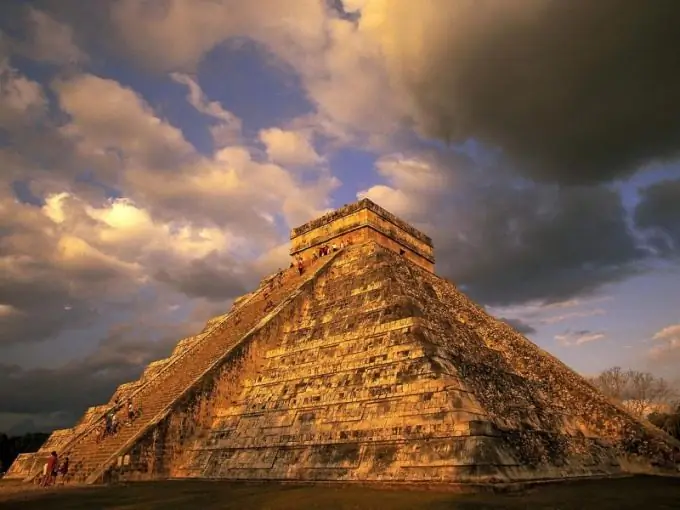- Author Antonio Harrison [email protected].
- Public 2023-12-16 07:44.
- Last modified 2025-01-22 21:44.
The Aztecs are the peoples who inhabited the Valley of Mexico City until the arrival of the Spanish conquerors in Mexico in 1521. Most of these peoples had their own cities and royal dynasties. The achievements of the Aztecs are legendary - so who are these mysterious people who were many centuries ahead of their time?

Life of the Aztecs
The center of the Aztec civilization was a rich and fertile territory in which the Aztecs successfully developed agriculture, growing tomatoes, beans, corn, chili peppers, pumpkin and other vegetables. In tropical areas, hardworking people gathered fruit and also engaged in cattle breeding, since the Aztecs often ate dog and turkey meat. In addition, hunting and fishing, weaving, weapons, pottery and jewelry, as well as merchant trade outside the empire played an important role in the life of the Aztecs.
The Aztecs were famous for their unique floating gardens, which were created by hand by Aztec craftsmen.
Since the Aztecs did not have wheels and pack animals at their disposal, they transported overland cargo using stretchers, and used canoes for water travel, which could accommodate up to twenty people. Tenochitlan, the capital of the Aztecs, was a unique achievement of the then architecture, consisting of huge pyramidal temples, sumptuous palaces, straight wide streets, stone sculptures and a network of canals. Pure drinking water was supplied to the city from aqueducts, and food was bought in a giant market right in the center of the capital.
Achievements in art and science
The Aztecs created a huge layer of pictographic literature, which represented various genres of poetry, religious chants, dramatic works, legends, tales and philosophical treatises. The Aztec nobility often held workshops on debates and poetic exercises, and the common people were fond of stone carving and sculpture. In addition, the Aztecs achieved great success in mathematics, medicine, pedagogy and jurisprudence.
In high esteem, the Aztecs had products made of bright bird feathers, with which the craftsmen decorated military shields, clothes, hats and standards.
The Aztec authorship belongs to the solar 365-day calendar, which divided the year into 18 months, each of which had 20 days. At the end of the year, the Aztecs added five days to these months, calculating the agricultural cycle and the time of religious rites using the solar calendar. The Aztecs also invented the 260-day ritual calendar, which contained 13 months, each of which also had 20 days. It was used for predictions and prophecies. Both calendars were united by a common 52-year cycle, the end of which each time symbolized the death of the old world.

